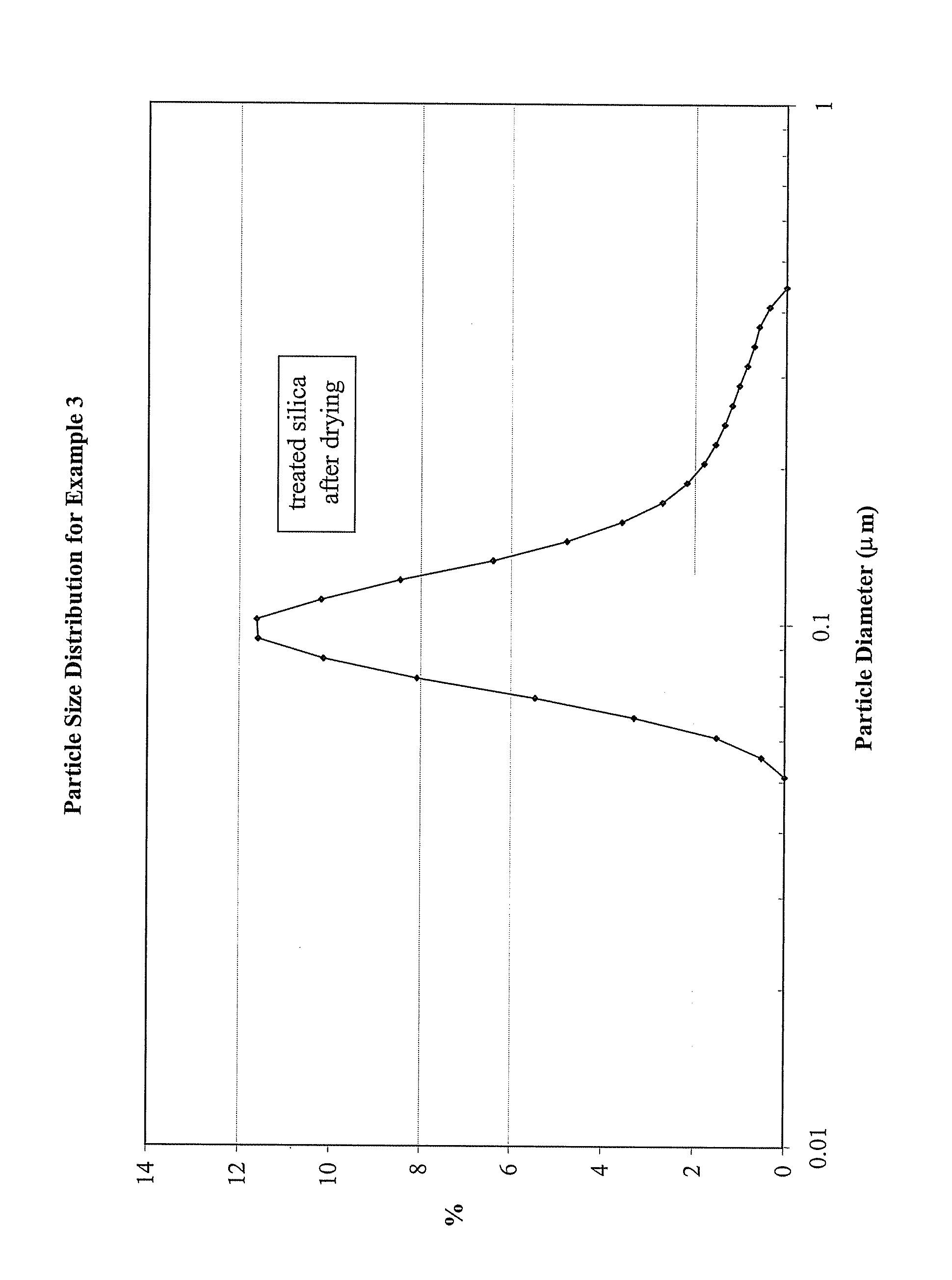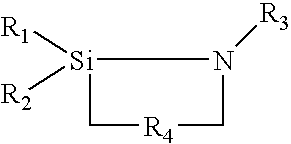Method of preparing hydrophobic silica
a technology of hydrophobic silica and silica, which is applied in the field of hydrophobic silica particles, can solve the problems of limiting the type of modifications possible at the particle surface and limiting the surface treatment of silica particles
- Summary
- Abstract
- Description
- Claims
- Application Information
AI Technical Summary
Benefits of technology
Problems solved by technology
Method used
Image
Examples
example 1
[0060]To 40 kg of an acidic aqueous dispersion of silica having a pH of about 3 (OMP-1040, obtained from Nissan Chemical) in a reactor was added 27.8 kg of 2-propanol and then 1.84 kg of octyltriethoxysilane. The resulting mixture was stirred rapidly with an overhead paddle stirrer and was simultaneously circulated through a homogenizer while heating to 70° C. and maintained for 6 h. 3.8 kg of a 3.43 wt. % aqueous solution of ammonium hydroxide was added to the reaction mixture, and the mixture was stirred at 70° C. for an additional 2.5 h. The reaction mixture was then spray dried at a temperature of 135° C. to provide hydrophobic silica particles as a dry powder. The carbon content of the silica particles was 4.28 wt. %. The T2 / T3 ratio was 0.48.
example 2
[0061]To 41 kg of an acidic aqueous dispersion of silica having a pH of about 3 (OYL, obtained from Nissan Chemical) in a reactor was added 28.7 kg of 2-propanol and then 1.87 kg of octyltriethoxysilane. The resulting mixture was stirred rapidly with an overhead paddle stirrer and was simultaneously circulated through a homogenizer while heating to 68° C. and so maintained for 7.5 h. The reaction mixture was then spray dried at a temperature of 130° C. to provide hydrophobic silica particles as a dry powder. The carbon content of the silica particles was 4.8 wt. %. The T2 / T3 ratio was 1.45.
example 3
[0062]To 39 kg of an acidic aqueous dispersion of silica having a pH of about 3 (OYL, obtained from Nissan Chemical) in a reactor was added 20.7 kg of deionized water and then 2.51 kg of hexamethyldisilazane. The resulting mixture was stirred rapidly with an overhead paddle stirrer and was simultaneously circulated through a homogenizer while heating to 50° C. and so maintained for 6 h. Approximately 28 L of the reaction mixture was removed and reserved for another purpose. To the remaining reaction mixture was added 24.6 kg of 2-propanol and then 0.61 kg of octyltriethoxysilane. Reaction was continued at 70° C. for 5.8 h. The reaction mixture was then spray dried at 125° C. to provide hydrophobic silica particles as a dry powder. The carbon content of the silica particles was 2.32 wt. %. The T2 / T3 ratio was 0.51. The particle size distribution is shown in the Figure.
PUM
| Property | Measurement | Unit |
|---|---|---|
| Temperature | aaaaa | aaaaa |
| Temperature | aaaaa | aaaaa |
| Temperature | aaaaa | aaaaa |
Abstract
Description
Claims
Application Information
 Login to View More
Login to View More - R&D
- Intellectual Property
- Life Sciences
- Materials
- Tech Scout
- Unparalleled Data Quality
- Higher Quality Content
- 60% Fewer Hallucinations
Browse by: Latest US Patents, China's latest patents, Technical Efficacy Thesaurus, Application Domain, Technology Topic, Popular Technical Reports.
© 2025 PatSnap. All rights reserved.Legal|Privacy policy|Modern Slavery Act Transparency Statement|Sitemap|About US| Contact US: help@patsnap.com


